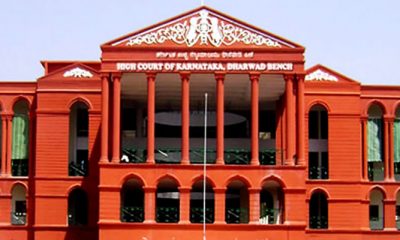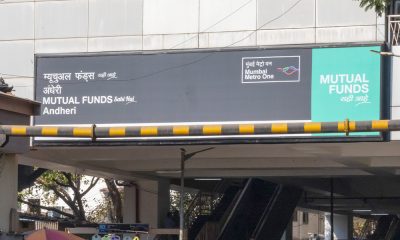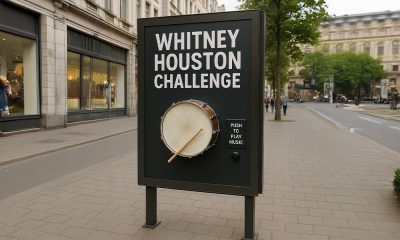Ad Policies & Regulations
BMC releases comprehensive draft policy for Outdoor Advertising
The Brihanmumbai Municipal Corporation unveils stringent guidelines for OOH and DOOH advertisements, incorporating specific regulations for political campaigns ahead of Maharashtra’s state elections.

In response to mounting safety concerns and the approaching Maharashtra state elections, the Brihanmumbai Municipal Corporation (BMC) has introduced the much-anticipated “Draft Policy Guidelines for Display of Outdoor Advertisements 2024.”
Key provisions of the draft policy
The newly formulated guidelines cover a wide range of advertising mediums, including traditional outdoor advertisements, political promotions, and digital hoardings. These guidelines are anchored within the framework of The Mumbai Municipal Corporation Act of 1888 and other related laws, set to be effective for a decade from their issuance or until new policies are approved.
Standardisation of billboard Sizes
The draft policy standardises billboard sizes across all zones within Mumbai, with a maximum limit set at 40 feet by 40 feet. Previously, billboard dimensions varied without clear rationale, but the new policy allows advertisers to install hoardings of any size within the defined maximum limit, eliminating inconsistencies across different zones.
Permit renewal and digital advertising regulations
The frequency of permit renewals has been reduced from six months to three months, reflecting a move towards tighter regulatory oversight. In terms of digital advertising, the policy introduces stringent measures for Digital Out-of-Home (DOOH) advertisements. Malls, multiplexes, shopping complexes, and commercial buildings are now required to apply for permissions to display digital LED advertisements. Additionally, advertisers must obtain a No Objection Certificate (NOC) from the Joint Commissioner of Police (Traffic) for any illuminated or digital hoardings. Without this certification, permits for such advertisements will neither be granted nor renewed.
Operational restrictions on digital displays
The policy also imposes operational restrictions on digital displays. All Digital/LED/LCD/Electronic hoardings are required to be switched off by 11 pm to reduce light pollution and energy consumption. Flickering advertisements, which can be distracting and potentially hazardous, are explicitly prohibited under the new guidelines. Moreover, hoardings that project over footpaths, roadways, or traffic islands are not allowed. Any structures violating these spatial constraints will be systematically phased out once their current permissions expire. Additionally, the policy prohibits the installation of hoardings that exceed a height of 100 feet from the ground level, and all pending proposals for new hoardings will be evaluated based on the new policy guidelines.
Accountability and financial implications
To ensure accountability, the policy includes several stringent measures:
- Liability: Advertisers bear sole responsibility for any accidents related to their hoardings.
- Blacklisting: Violations, particularly non-payment of fees, can result in the blacklisting of advertisers or permit holders. Blacklisted entities are prohibited from applying for new hoarding installations.
- Mandatory insurance: Advertisers are required to have insurance coverage ranging from ₹5 lakh to ₹1 crore to cover potential damages caused by hoardings.
- Licence fee increase: The advertisement licence fee will increase by 10% annually.
- Online services: The BMC is developing online services for the grant and renewal of permits to streamline administrative processes.
Guidelines for political advertising ahead of elections
With Maharashtra’s state elections approaching, the BMC’s draft policy sets specific rules for political advertisements to ensure fair practices during the election period.
Restrictions on political advertisements
- Public properties: No political advertising is allowed on playgrounds, parks, government-owned vehicles, or state transport buses once the Model Code of Conduct (MCC) is in effect.
- Private residences and vehicles:
- A maximum of three flags per party or candidate is allowed per residence.
- Vehicles may display only one flag, not exceeding 1 foot by 1/2 feet, mounted on a pole no longer than 3 feet.
- Banners on vehicles are forbidden, although roadshows may carry a handheld banner up to 6 feet by 4 feet.
- Spotlights, flashing lights, or hooters on vehicles are banned.
Temporary Campaign Offices and Private Premises
- Location restrictions: Temporary campaign offices must not be located on encroached properties, religious sites, hospitals, or educational institutions and must be at least 200 metres from any polling station.
- Advertising limits: These offices may display only one party flag or banner, not exceeding 4 feet by 8 feet, and must comply with local regulations.
- Hoarding usage: Political parties may display advertisements on hoardings located on private premises, but not on public properties like municipal lands or structures managed by public bodies (e.g., MHADA, Railway Authority, BEST).
- Non-Illuminated banners: Parties are allowed to display non-illuminated banners or boards on their offices located within private premises without requiring special permissions. Similar allowances apply to pandals for religious festivals.
Public participation and implementation
The BMC has opened the draft policy for public suggestions and objections, inviting stakeholders to submit their inputs by August 26, 2024, until 5 pm. After the consultation period, the policy will be finalised and is expected to govern all outdoor advertising approvals, including digital formats, for the next ten years.
This proactive move by the BMC aims to balance the needs of advertisers and political entities with safety and aesthetic considerations in Mumbai’s urban landscape. As the city prepares for the upcoming elections, these guidelines are poised to play a crucial role in shaping the visual and civic environment of Mumbai.
























